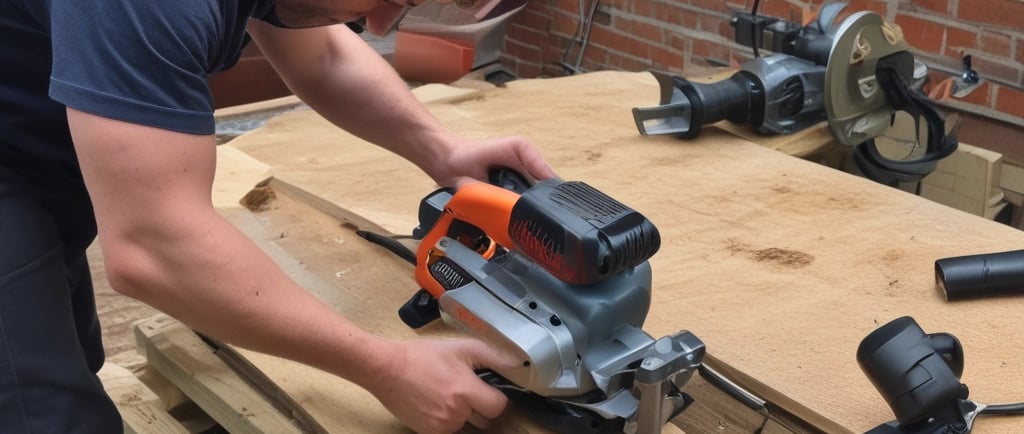Ultimate Guide to Maintaining Your Power Tools: Pro Tips for Longevity
10/24/20254 min read


Understanding the Importance of Tool Maintenance
Maintaining power tools is an essential practice that directly impacts their performance, safety, and longevity. When tools are regularly serviced, they function more efficiently, providing users with consistent results in their projects. Neglecting maintenance can lead to a decline in performance, potentially causing projects to take longer and requiring more effort. This misalignment between expected and actual performance can be frustrating for users, especially in time-sensitive situations.
Moreover, the financial implications of neglecting tool maintenance are significant. Regular upkeep can prevent costly repairs or replacements that arise from excessive wear, damage, or improper functioning. By investing time and effort into maintaining power tools, users can significantly extend their lifespan, thereby maximizing the return on investment. In contrast, failing to perform routine checks can lead not only to the need for immediate repairs but also to the unfortunate early retirement of tools that could otherwise serve effectively for many more years.
Safety is another critical facet of tool maintenance. Poorly maintained tools can pose serious risks to users. Equipment that fails to operate correctly may cause injuries, accidents, or unexpected malfunctions. Regularly checking tools for signs of wear, ensuring all components are secure, and replacing any damaged parts can greatly reduce the risk of accidents. Additionally, using well-maintained tools enhances personal confidence in their operation, allowing users to focus on their work rather than worry about potential hazards.
In summary, the importance of maintaining power tools cannot be understated. Routine care improves efficiency, enhances safety, and ultimately contributes to a more cost-effective approach to tool ownership. Adopting maintenance practices ensures your power tools remain reliable, efficient, and ready for any project you undertake.
Essential Maintenance Tasks for Power Tools
Power tools represent a significant investment for both professionals and DIY enthusiasts. To ensure these tools remain efficient and safe, regular maintenance is imperative. Essential maintenance tasks include cleaning, lubricating, inspecting for wear, and checking battery health. Each of these tasks contributes to the longevity and performance of power tools and should be performed at the recommended intervals.
First and foremost, cleaning your power tools after each use is crucial. Dust, debris, and residue can accumulate, potentially leading to operational issues. Use a soft brush or compressed air to remove particles from crevices, and a damp cloth for surfaces. Additionally, certain power tools are designed with removable parts, which should also be cleaned periodically according to the manufacturer's specifications.
Lubrication is another key maintenance task. Regularly applying the appropriate lubricant can prevent friction and wear in moving parts. Depending on the tool's usage frequency, lubricant should be reapplied every few months, or even monthly for tools used heavily. It is important to use the right type of lubricant, as specified in the tool's manual, to avoid damaging components.
Inspection for wear is essential to identify parts that may need replacement. Before each use, conduct a visual inspection to check for cracks, chips, and other signs of damage. Additionally, regularly evaluate blades, bits, and batteries for signs of wear. For battery-operated tools, checking the battery health—typically every few months—can help ensure optimal performance and safety.
In conclusion, adhering to these essential maintenance tasks—cleaning, lubricating, inspecting for wear, and checking battery health—will enhance the longevity of your power tools. By integrating these practices into your routine, you can maintain the efficiency and reliability of your tools, ensuring they perform optimally for years to come.
Storing Your Power Tools Safely and Effectively
Proper storage of power tools is crucial for ensuring both their longevity and optimal performance. One of the first steps to consider is the organization of your tools. Creating a designated space for your power tools will help prevent damage and maintain a clutter-free environment. Utilizing pegboards, toolboxes, or wall-mounted racks can aid in keeping tools visible and accessible, thus reducing the risk of mishandling.
Furthermore, it is essential to consider the climate in which your power tools are stored. Excessive humidity can lead to rust and corrosion, while extreme temperatures can negatively impact their functionality. Ideally, power tools should be stored in a climate-controlled environment, away from basements or unventilated garages where moisture and temperature fluctuations may occur. If climate control is not available, opting for a dehumidifier can help maintain a more stable environment.
Using protective cases or covers is another effective measure for safeguarding your tools. These can help shield against dust, moisture, and accidental impacts. For instance, power tools that come with their original carrying cases should be stored within them whenever possible. If a case is not available, consider investing in padded storage solutions that can provide additional protection.
Additionally, it is advisable to keep power tools elevated off the ground to prevent moisture absorption from floors, especially in locations prone to water accumulation. Utilizing shelves or cabinets that are specifically designed for tool storage can be beneficial in achieving this goal.
By following these guidelines for storing your power tools, you can ensure they remain protected, organized, and ready for use. Implementing these practices will extend the life of your tools and enhance their reliability when you need them most.
Signs Your Power Tools Need Professional Attention
Power tools are essential for a range of tasks, from home improvement projects to professional construction work. However, like any mechanical device, they can develop issues over time. Recognizing the signs that indicate your power tools require professional attention can save time, money, and ensure safety during use. One of the most noticeable indicators is unusual sounds. A power tool that emits grinding, clicking, or whining noises may be experiencing internal problems, such as worn bearings or a failing motor. Continuous use under such conditions can lead to more severe damage, so addressing these sounds promptly is vital.
Another common sign that your power tools may need servicing is performance inconsistency. If a tool that typically operates smoothly starts to sputter, stall, or lacks the power it once had, it could be an indication of underlying issues. For instance, a drill that struggles to penetrate materials may suffer from a dull bit or a more serious motor malfunction. Identifying these performance lags early can prevent complete breakdowns and extend the overall lifespan of the equipment.
Furthermore, visible signs of damage, such as cracks in the casing, frayed cords, or burned-out switches, should not be overlooked. These physical indicators often point to safety hazards and the potential for electric shocks or fires. Engaging a professional for repairs ensures that the tools are assessed by someone with the expertise to identify and rectify the problem effectively, minimizing risks associated with DIY fixes that could lead to further damage.
In addition to enhancing safety and functionality, seeking professional help can often be more cost-effective in the long run. A well-trained technician can provide a thorough inspection, offer routine maintenance, and suggest preventative measures, thereby avoiding extensive costs associated with extensive repairs or replacements. Overall, recognizing the signs of needing professional attention for your power tools is key to maintaining their longevity and performance.
